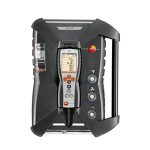Are you feeling tired, rundown or unwell, seemingly for no reason? Does being in a particular location make you feel uncomfortable or sick?
If so, then you may be suffering from Sick Building Syndrome, and in need of an air quality assessment, post haste.
What is Sick Building Syndrome?
Sick Building Syndrome is described by the Environmental Protection Agency as a situation in which “building occupants experience acute health and comfort effects that appear to be linked to time spent in a building”, in cases where “no specific illness or cause can be identified”.
Furthermore, complaints about Sick Building Syndrome must also be localised to a particular room or area in the building.
Typical Sick Building Syndrome symptoms include headaches, dry coughs, dry or itchy skin, dizziness, problems with concentration and increased sensitivity to odours.
What causes Sick Building Syndrome?
Sick Building Syndrome can be attributed to a number of cleanliness problems or building design flaws, such as chemical contamination or mould growth.
However, the most common cause is issues with the building’s heating, ventilation, and air conditioning (HVAC) systems, which result in inadequate ventilation. It is in these cases where proper air testing is required.
How do I conduct an air quality test?
You can assess the air quality of a building and determine the cause of Sick Building Syndrome by conducting a carbon dioxide measurement using a specialised CO2 measurement tool.
The testo 535 Versatile C02 Measurement device is an example of one such tool that can be used to measure indoor air quality and determine whether the CO2 concentration of a particular environment has reached an unsafe level.
Highly accurate and extremely efficient, the testo 535 will allow you to identify areas that may be at risk of Sick Building Syndrome, ensuring that the proper modifications can be made to address this problem and keep residents and visitors safe and healthy.









 Reduce cooking oil costs while ensuring quality
Reduce cooking oil costs while ensuring quality Expert knowledge on CO2 monitoring
Expert knowledge on CO2 monitoring Refrigeration knowledge - in 3 modules
Refrigeration knowledge - in 3 modules



